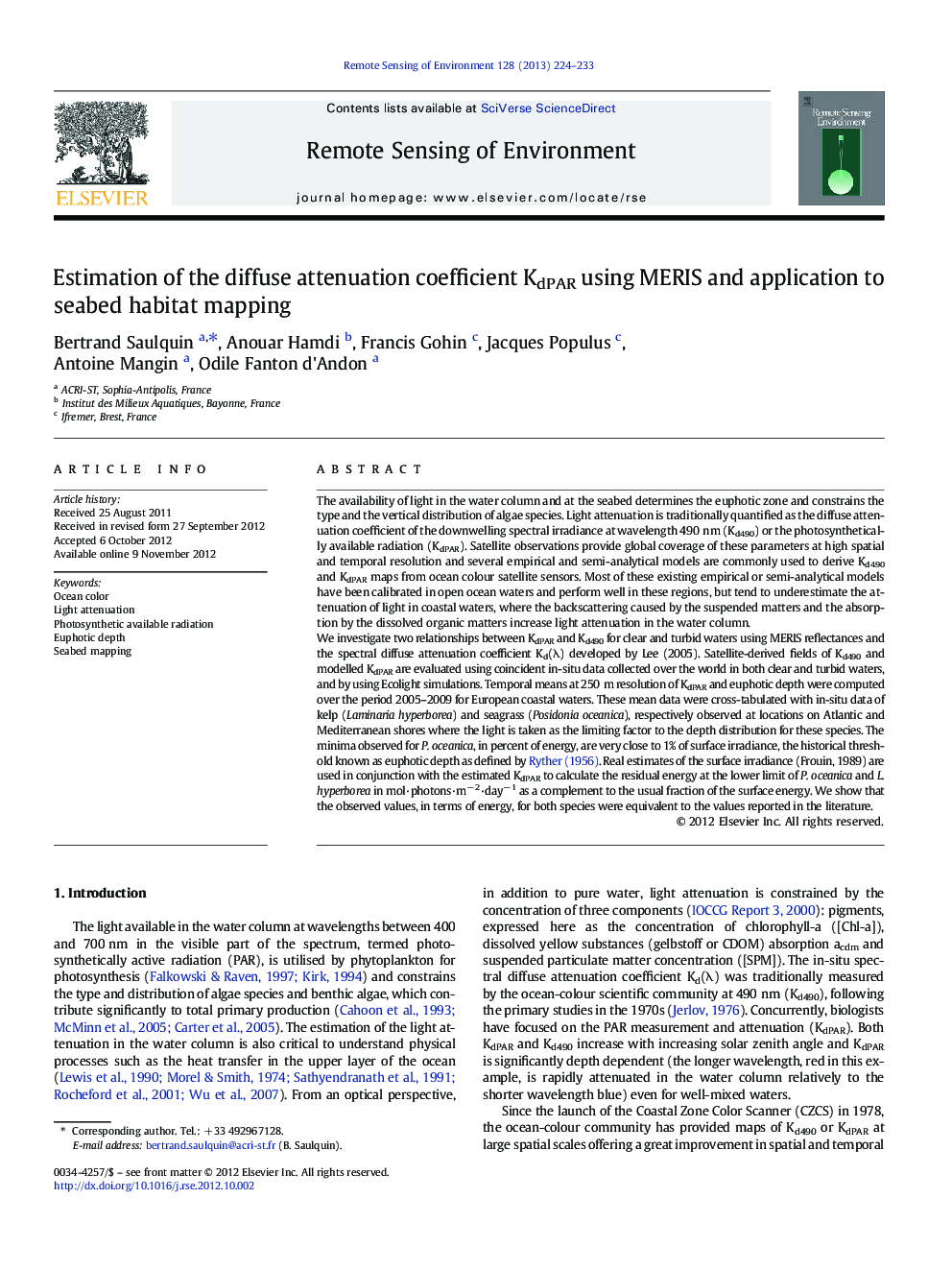| کد مقاله | کد نشریه | سال انتشار | مقاله انگلیسی | نسخه تمام متن |
|---|---|---|---|---|
| 4458971 | 1621272 | 2013 | 10 صفحه PDF | دانلود رایگان |

The availability of light in the water column and at the seabed determines the euphotic zone and constrains the type and the vertical distribution of algae species. Light attenuation is traditionally quantified as the diffuse attenuation coefficient of the downwelling spectral irradiance at wavelength 490 nm (Kd490) or the photosynthetically available radiation (KdPAR). Satellite observations provide global coverage of these parameters at high spatial and temporal resolution and several empirical and semi-analytical models are commonly used to derive Kd490 and KdPAR maps from ocean colour satellite sensors. Most of these existing empirical or semi-analytical models have been calibrated in open ocean waters and perform well in these regions, but tend to underestimate the attenuation of light in coastal waters, where the backscattering caused by the suspended matters and the absorption by the dissolved organic matters increase light attenuation in the water column.We investigate two relationships between KdPAR and Kd490 for clear and turbid waters using MERIS reflectances and the spectral diffuse attenuation coefficient Kd(λ) developed by Lee (2005). Satellite-derived fields of Kd490 and modelled KdPAR are evaluated using coincident in-situ data collected over the world in both clear and turbid waters, and by using Ecolight simulations. Temporal means at 250 m resolution of KdPAR and euphotic depth were computed over the period 2005–2009 for European coastal waters. These mean data were cross-tabulated with in-situ data of kelp (Laminaria hyperborea) and seagrass (Posidonia oceanica), respectively observed at locations on Atlantic and Mediterranean shores where the light is taken as the limiting factor to the depth distribution for these species. The minima observed for P. oceanica, in percent of energy, are very close to 1% of surface irradiance, the historical threshold known as euphotic depth as defined by Ryther (1956). Real estimates of the surface irradiance (Frouin, 1989) are used in conjunction with the estimated KdPAR to calculate the residual energy at the lower limit of P. oceanica and L. hyperborea in mol·photons·m− 2·day− 1 as a complement to the usual fraction of the surface energy. We show that the observed values, in terms of energy, for both species were equivalent to the values reported in the literature.
► We compare the most common models of satellite derived Kd490 to an in-situ dataset.
► We propose two relationships between the mean KdPAR and the Kd490.
► We generate high resolution maps of KdPAR and ZEU over Europe.
► These maps are cross-tabulated with in-situ coverage of kelp and seagrass.
► The observed minimum for light, in percent and energy, is compared to the literature.
Journal: Remote Sensing of Environment - Volume 128, 21 January 2013, Pages 224–233